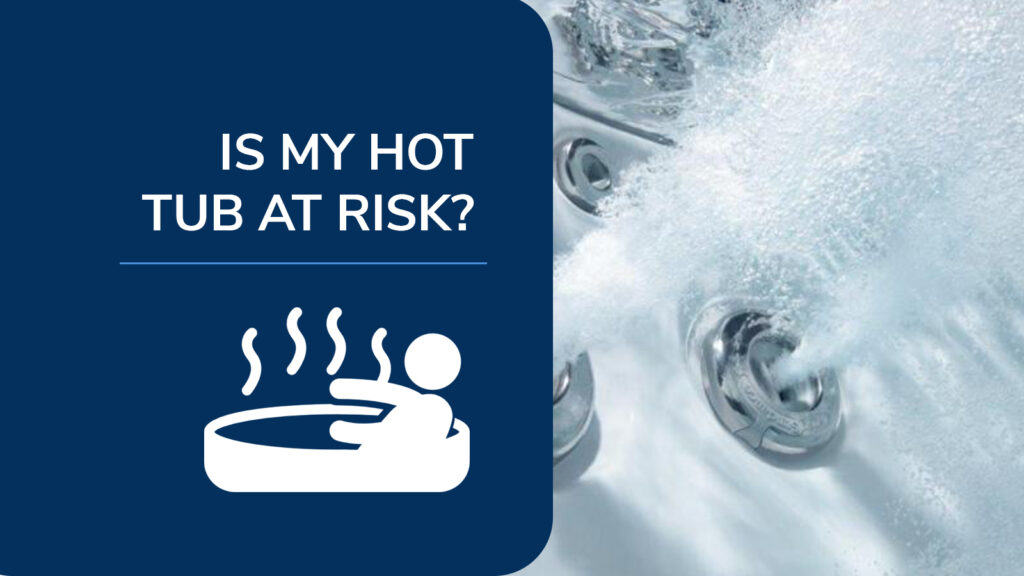Legionnaires’ Disease in Hot Tubs
Hot tub season has officially started. Soaking in a hot tub may be exactly what you need to unwind and escape after a long hard day. Hot tubs provide health benefits. The potential benefits of using a hot tub vary from person to person. Nonetheless, hot tubs can also be a breeding ground for dangerous bacteria and harbor risks to your health, including Legionnaires’ Disease.
What is Legionella and Legionnaires’ Disease?
Legionella is a bacteria that includes the species L. pneumophila, causing legionellosis. Legionella is the bacteria that causes Legionnaires’ Disease. It is a waterborne bacteria that flourishes in warm water (typically between 77-113°F)
One strain of Legionella that is especially concerning to humans is Legionella pneumophila, which is found in both potable water systems (aka drinking water) and non-potable systems like wastewater or a heating and cooling system. Even though Legionella occurs in water, it is mainly spread when infected water becomes mist in the air. Breathing in droplets of water that contain Legionella can actually infect people with two different types of disease, Legionnaires Disease or Pontiac Fever. Legionnaires Disease, also called Legionellosis, is a severe form of pneumonia that can also cause infections in wounds and complications in other organs like the heart and kidneys. Legionnaires Disease is fatal in 5-10% of cases worldwide.
Why Are Hot Tubs At Risk for Legionella?
Hot tubs have been associated with large outbreaks of Legionnaires’ disease. The North Carolina Department of Health and Human Services investigated an outbreak of Legionnaires’ disease associated with a state fair in September 2019. Investigations suggested that exposure to Legionella bacteria occurred in an events center building where vendors were displaying hot tubs. Their findings highlight the importance of proper operation and maintenance of devices that aerosolize water.
Hot Tubs pose a high risk because infection happens after breathing in small droplets of water containing the Legionella bacterium. Any fixture or water system that exposes people to splashing water or a fine spray of aerosolized water can be a common source of infection and Legionella growth. Cooling towers, showers, fountains, misters, hot tubs and whirlpools fall into the category of places where Legionella can grow and thrive. If hot tubs are not well maintained, the warm temperature supports growth of Legionella, which can spread through water jets.

How Do I Prevent the Spread of Legionella in My Hot Tub?
The CDC has developed a list of questions to ask your hot tub operator. Some of those crucial questions are:
-
What was the most recent health inspection score for the hot tub/spa?
- Are the disinfectant levels and pH checked at least twice per day?
- Are the disinfectant levels and pH checked more often when the hot tub is being used by a lot of people relative to its size?
-
Are the following maintenance activities performed?
o Daily removal of the slime or biofilm layer by scrubbing and cleaning
o Replacement of the hot tub/spa water filter according to the manufacturer’s recommendations
o Replacement of hot tub/spa water as often as required by the health department or recommended by the manufacturer
The key to minimizing Legionella growth in your hot tub is prevention. Reducing the risk of Legionella growth in your hot tub can be done with proactive steps. Proper operation and maintenance of hot tubs can help prevent the growth of Legionella and protect people’s health. Make sure disinfectants in hot tubs/spas (like chlorine) are kept at the level and pH needed to reduce the risk of spreading germs like Legionella. Chlorine breaks down more quickly in warm water and must be checked on a regular basis. Keep your filters clean and keep the pH level of the water between 7.2 and 7.8. Developing a water management plan or program should be your primary defense against Legionella growth in your hot tub. Periodically testing your water for the presence of Legionella is also a strategy that should be employed in Legionella prevention. No one wants customers, family or friends to become sick simply by enjoying the relaxation brought about by hot tub use.
![]()
At IWC Innovations, we develop water management programs and water testing programs to minimize the risk of Legionnaires’ Disease. Contact one of our experts at IWC Innovations to find out more about how easy and cost effective we make the development of a defensible water management and testing program.
References:




